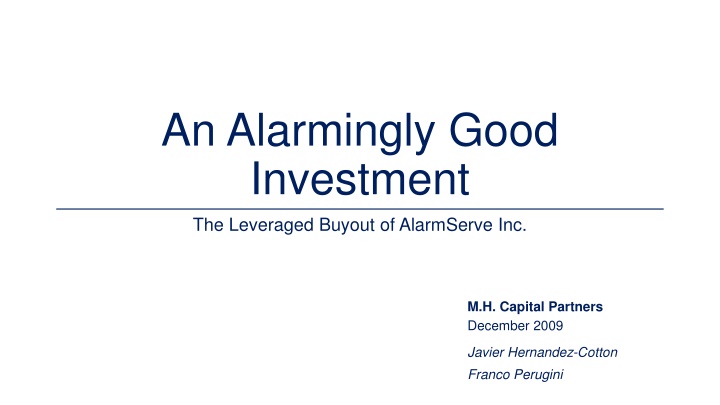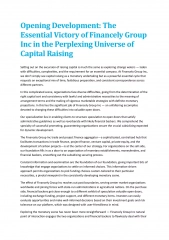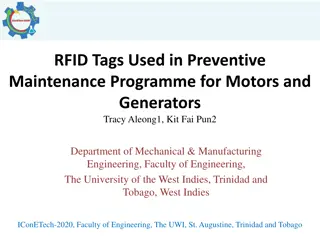Leveraged Buyout of AlarmServe Inc.
This content discusses the leveraged buyout of AlarmServe Inc. by M.H. Capital Partners in December 2009, analyzing the investment, valuation, implementation, and market conditions. Key considerations include financing strategies, target IRR of 30%, value creation, and exit strategies. The content also highlights AlarmServe's products/services, competitive advantage, financial snapshot, and market debt capital markets in the alarm security industry.
Download Presentation

Please find below an Image/Link to download the presentation.
The content on the website is provided AS IS for your information and personal use only. It may not be sold, licensed, or shared on other websites without obtaining consent from the author.If you encounter any issues during the download, it is possible that the publisher has removed the file from their server.
You are allowed to download the files provided on this website for personal or commercial use, subject to the condition that they are used lawfully. All files are the property of their respective owners.
The content on the website is provided AS IS for your information and personal use only. It may not be sold, licensed, or shared on other websites without obtaining consent from the author.
E N D
Presentation Transcript
An Alarmingly Good Investment The Leveraged Buyout of AlarmServe Inc. M.H. Capital Partners December 2009 Javier Hernandez-Cotton Franco Perugini
Introduction 1. Introduction 2. Analysis 3. Valuation 4. Implementation
Introduction Should North Village Capital ( NVC ) buyout AlarmServe Inc.? Analysis Valuation Implementation Introduction
Introduction Should North Village Capital ( NVC ) buyout AlarmServe Inc.? Acquire AlarmServe at a purchase price of $51.0mm at 6.0x EBITDA using 2.5x total leverage ( Moderate Leverage ) to realize I.R.R. of 35% and a return on cash of 4.2x by 2015 Analysis Valuation Implementation Introduction
Situation Overview $51mm bid for AlarmServe at 6x EBITDA Proposition Key Considerations: Establish entry strategy that accounts for systemic risk and current debt capital markets conditions Uncertain Market Conditions 1 What portion of the deal will be financed through debt & what covenants could be placed on the debt? Deal Financing & Debt Structure 2 How will NVC achieve a target IRR of 30% (min. 20%)? 3 Value Creation 4 Exit Strategy How will NVC exit its position in 5-7 years? Analysis Valuation Implementation Introduction
Analysis 1. Introduction 2. Analysis 3. Valuation 4. Implementation
AlarmServe as a target Products & Services Installation & servicing of two way voice communication system Competitive Advantage: Unique service offering superior to competitors Strong contract base (secured revenues): represent 88% of revenues Company branding is strong, enabling them in a merger to expand services and offering under the known AlarmServe banner Opportunity: No singular Industry Leader at the moment Value Financial Snapshot 44.0 40.7 38.1 Historic 3-Year Revenue CAGR 35.6 Operating Margins 33.9 32.3 28.3 23.8 26% 2009 10.7% 18% 2007 2007A 2008A 2009A 2010F 2011F 2012F 2013F 2014F Revenue EBITDA (Post-Syn.) Introduction Valuation Implementation Analysis
Assessing the Market Debt Capital Markets Alarm Security Industry Shift over the past years from fragmented to consolidated Outside large low-cost players, there is ~3600 security alarm providers Leverage requirements for financial institutions has increased since the financial collapse While higher leverage is favourable for returns, interest rates ramp up aggressively with increased leverage (senior: 6% to 8%, subordinated 12% to 15%) Provides opportunity for companies to consolidate through acquisitions of smaller providers Key Takeaway Take on conservative amount of debt for the deal and provide scenarios for potential covenants offered by the bank AlarmServe can acquire add-on companies enabling them to grow customer base, diversify product offerings, and scale business Implications to NVC Introduction Valuation Implementation Analysis
Investment Thesis & Strategic Rationale NVC Deal would represent 10% of NVC s total portfolio During financial collapse, one of the fund s companies has gone under 1 Service is a growing necessity amongst consumers & even in recessionary periods is a staple service Favourability of Industry Inorganic: Add-on acquisition Organic: Geographic expansion, product expansion to higher margin segments Inorganic & Organic Growth Opportunities 2 Favourable Return Opportunies Unlevered: 23% Moderate Leverage: 35% High Leverage: 62% 3 Investment opportunity provides low risk opportunity with expansive growth opportunities through conservative strategic movements Introduction Valuation Implementation Analysis
Valuation 1. Introduction 2. Analysis 3. Valuation 4. Implementation
Valuation Overview Projections Operating Sources and Uses Returns Analysis IRR Cash on Cash Sensitivity Leverage Levels Multiples Introduction Analysis Implementation Valuation
Valuation Inputs Operating Projections Debt Structure Returns 2010-2014 revenue CAGR of ~7% 5 year amortizing senior debt Exit multiple equal to entry multiple (6.0x base case) 2010-2014 EBITDA CAGR of 13% pre- synergies 8 year bullet payment subordinated debt Revolving operating line of credit Capex equal to 13% of revenues Assumes excess cash is swept to pay down revolver Additional management fees of 2% of revenues Introduction Analysis Implementation Valuation
Income Statement Income Statement FY2007 23.8 (4.9) 18.9 FY2008 28.3 (6.2) 22.1 FY2009 32.3 (7.6) 24.7 FY2010 33.9 (7.5) 26.4 FY2011 35.6 (7.8) 27.8 FY2012 38.1 (8.4) 29.7 FY2013 40.7 (9.0) 31.7 FY2014 44.0 (9.7) 34.3 7% CAGR Revenue COGS Gross Profit SG&A Fixed Variable EBITDA (Pre-Syn.) (10.4) (4.1) 4.4 (10.0) (5.1) 7.0 (10.4) (5.8) 8.5 (10.4) (6.1) 9.9 (10.4) (6.4) 11.0 (10.4) (6.9) 12.4 (10.4) (7.3) 14.0 (10.4) (7.9) 16.0 13% CAGR Synergies EBITDA 0.0 4.4 0.0 7.0 0.0 8.5 0.0 9.9 0.5 11.5 1.5 13.9 2.0 16.0 2.0 18.0 Depreciation EBIT (2.6) 1.8 (3.1) 3.9 (3.1) 5.4 (3.6) 6.3 (3.7) 7.8 (4.0) 9.9 (4.3) 11.7 (4.6) 13.4 Synergies scaling to $2mm/annum Introduction Analysis Implementation Valuation
Deal Structure Base Case General Assumptions Company Name Sources and Uses Sources Senior Debt Subordinated Debt Bank Line Drawn Equity from Sponsor Total Alarmserve Inc Uses 17.0 Purchase of Alarmserve 4.3 Transaction Costs 3.4 27.4 52.0 Total 51.0 1.0 2009 EBITDA ($mm) Purchase Multiple Purchase Price ($mm) 8.5 6.0x 51 2% 52.0 We factor in additional transaction costs of 2% for due diligence and funding costs Inputs Scenario Unlevered Moderate Leverage High Leverage Leverage Senior 0.0x 2.0x 3.0x Interest Subord. 0.0x 0.5x 1.5x Senior 0% 6% 8% Subord. 0% 12% 15% Our base case scenario assumes moderate leverage Introduction Analysis Implementation Valuation
Debt Schedule Debt Schedule FY2010 FY2011 FY2012 FY2013 FY2014 Senior Debt Debt Beginning Principal Repaid Debt Ending Interest Expense 17.0 3.4 13.6 0.9 13.6 3.4 10.2 0.7 10.2 3.4 6.8 0.5 6.8 3.4 3.4 0.3 3.4 3.4 0.0 0.1 Senior debt amortizes over 5 years at 6% interest Subordinated Debt Beginning Principal Repaid Debt Ending Interest Expense 4.3 0.0 4.3 0.5 4.3 0.0 4.3 0.5 4.3 0.0 4.3 0.5 4.3 0.0 4.3 0.5 4.3 0.0 4.3 0.5 Sub debt priced at 12% Operating Line Beginning Balance (Cash) Drawn (Repaid) Ending Balance (Cash) Interest Expense (Income) Operating line used as a cash sweep; cash balances pay 1% interest 3.4 (1.3) 2.1 0.2 2.1 (1.9) 0.3 0.1 0.3 (2.9) (2.7) (0.0) (2.7) (3.9) (6.5) (0.1) (6.5) (4.7) (11.2) (0.1) Total Debt Beginning Balance Net Repayment Ending Balance Interest Expense 24.7 3.4 21.3 1.6 20.0 3.4 16.6 1.3 14.7 3.4 11.3 1.0 8.4 3.4 5.0 0.8 1.1 3.4 (2.3) 0.5 Alarmserve is able to reach net cash by 2014 Introduction Analysis Implementation Valuation
Cash Flow Statement Cash Flow Statement FY2010 FY2011 11.5 FY2012 13.9 FY2013 16.0 FY2014 18.0 Management fees are an additional expense for Alarmserve EBITDA Less: Mgmt Fees Less: D&A EBIT Less: Interest EBT Less: Taxes 9.9 0.7 (3.6) 7.0 1.6 8.6 3.0 0.7 (3.7) 8.5 1.3 9.8 3.4 0.8 (4.0) 10.7 1.0 11.7 4.1 0.8 (4.3) 12.5 0.8 13.2 4.6 0.9 (4.6) 14.3 0.5 14.8 5.2 Net Income Less: Chg. In WC Add: D&A Cash from Operations 5.6 (0.1) 3.6 9.1 6.4 (0.2) 3.7 9.9 7.6 (0.3) 4.0 11.3 8.6 (0.3) 4.3 12.6 9.6 (0.4) 4.6 13.8 Capital expenditures at 13% of revenues Capital Expenditures Cash from Investing 4.4 (4.4) 4.6 (4.6) 5.0 (5.0) 5.3 (5.3) 5.7 (5.7) Dividends Principal Repayment Cash from Financing 0.0 (3.4) (3.4) 0.0 (3.4) (3.4) 0.0 (3.4) (3.4) 0.0 (3.4) (3.4) 0.0 (3.4) (3.4) Excess cash used to pay down revolver 1.3 (1.3) 1.9 (1.9) 2.9 (2.9) 3.9 (3.9) 4.7 (4.7) Cash Flow Operating Line Drawn/(Repaid) Introduction Analysis Implementation Valuation
Returns Analysis Returns Analysis FY2009 (27) FY2010 FY2011 FY2012 FY2013 FY2014 Initial Investment EBITDA Exit Multiple Enterprise Value Less: Debt Plus: Cash Equity Value 10 11 14 16 18 Exit multiple = entry multiple 6.0x 59 (20) 6.0x 69 (15) 6.0x 84 (11) 6.0x 96 (8) 6.0x 108 (4) 11 115 0 0 3 7 39 54 75 95 Plus: Mgmt Fees @ 2.0% Plus: Dividends Cash Flow to Equity 1 0 1 0 1 0 1 0 1 0 No dividends assumed 40 55 76 96 116 Ability to realize 35% IRR by 2014 IRR Cash on Cash 46% 1.5x 42% 2.0x 42% 2.7x 38% 3.5x 35% 4.2x Returns well above 20% hurdle rate; Additional upside exists through paying excess cash out to NVC as a dividend Introduction Analysis Implementation Valuation
Leverage Analysis Leverage Analysis FY2009 FY2010 FY2011 11.5 FY2012 13.9 FY2013 16.0 FY2014 18.0 EBITDA Capex Interest Expense Net Debt 9.9 4.4 1.6 20.0 4.6 1.3 14.7 5.0 1.0 8.4 5.3 0.8 1.1 5.7 0.5 (6.9) Ratios Net Debt / EBITDA EBITDA Coverage Interest Coverage EBITDA-Capex Coverage 2.0x 6.2x 3.9x 3.4x 1.3x 8.6x 5.9x 5.2x 0.6x 14.0x 10.0x 9.0x 0.1x 21.3x 15.5x 14.2x -0.4x 35.9x 26.7x 24.5x Maintenance Covenants Initial Leverage (incl. Revolver) Leverage Buffer Annual Step-Down Max Allowable Leverage 2.9x 0.5x 2.9x 0.5x -0.2x 3.2x 3.2x 0.0x -0.2x 3.0x 3.0x 0.0x -0.2x 2.8x 2.8x 0.0x -0.2x 2.6x 2.6x 0.0x -0.2x 2.4x 3.4x Min. EBITDA Coverage 2.5x 2.5x 2.5x 2.5x 2.5x FCF Coverage 1.5x 1.5x 1.5x 1.5x 1.5x Under the base case, Alarmserve will have no trouble meeting debt covenants Introduction Analysis Implementation Valuation
Covenant Stress Test 85% Attainment Leverage Analysis FY2010 FY2011 FY2012 FY2013 11.0 FY2014 12.6 EBITDA Capex Interest Expense Net Debt 5.7 3.7 1.6 21.7 7.1 3.9 1.4 18.6 9.3 4.2 1.2 14.5 4.5 1.0 9.6 4.9 0.6 4.2 Ratios Net Debt / EBITDA EBITDA Coverage Interest Coverage EBITDA-Capex Coverage (FCF Coverage) 3.8x 3.6x 1.3x 1.2x 2.6x 5.0x 2.4x 2.2x 1.6x 7.5x 4.3x 4.1x 0.9x 11.1x 6.7x 6.5x 0.3x 20.6x 13.0x 12.6x Maintenance Covenants Initial Leverage (incl. Revolver) Leverage Buffer Annual Step-Down Max Allowable Leverage 2.9x 0.5x 2.9x 0.5x -0.2x 3.2x 3.2x 0.0x -0.2x 3.0x 3.0x 0.0x -0.2x 2.8x 2.8x 0.0x -0.2x 2.6x 2.6x 0.0x -0.2x 2.4x 3.4x Min. EBITDA Coverage 2.5x 2.5x 2.5x 2.5x 2.5x FCF Coverage 1.5x 1.5x 1.5x 1.5x 1.5x At 85% attainment, we see a leverage and FCF coverage breach Introduction Analysis Implementation Valuation
Sensitivities IRR Sensitivity to Leverage and Exit IRR Sensitivity to Leverage and EBITDA Attainment EBITDA Attainment - 2014 10.8 9% Leverage Exit Multiple 5.0x 6.0x 20% 23% 4.0x 16% 7.0x 26% 8.0x 29% 14.4 17% 18.0 23% 19.8 26% 21.6 28% Unlevered Unlevered Leverage 25% 30% 35% 39% 42% 17% 27% 35% 38% 41% Moderate Moderate 49% 56% 62% 67% 71% 37% 52% 62% 66% 70% High Leverage High Leverage An unlevered scenario still surpasses 20% hurdle Exit EBITDA of $10.8mm (6% CAGR) still provides 17% IRR Deal structure provides flexibility with assumptions and leverage to realize adequate returns Introduction Analysis Implementation Valuation
Implementation 1. Introduction 2. Analysis 3. Valuation 4. Implementation
Recommended Course of Action Acquire AlarmServe at a purchase price of $51mm at 6x EBITDA using 2.5x total leverage ( Moderate Leverage ) to realize I.R.R. of 35% and a return on cash of 4.2x by 2015 1 Deal Schedule Company Management Implementation Plan: 2 3 Exit Strategy Introduction Analysis Valuation Implementation
Acquiring AlarmServe 1 Deal Schedule Introduction Analysis Valuation Implementation
Recommended Course of Action 1 Deal Schedule Negotiation range of $51mm $55mm: $55mm price represents 6.5x EBITDA & provides an I.R.R. of 31% at 6x exit multiple Negotiation Buffer Contact Major Canadian Banks Target rates: senior at 6% and subordinate at 12% Contact Banks for Financing Evaluate Internal Processes Potential to introduce management or optimize operations Introduction Analysis Valuation Implementation
Inorganic Growth Opportunity Company Management 2 Potential Consolidation Attempt Look for target with ~$5mm in EBITDA (half ours) and look to pay ~6.0x Acquisition Target Criteria Strong client base outside of AlarmServe s current network Ability to scale response workforce: Office integration opportunities Introduction Analysis Valuation Implementation
Exiting in ~2014 3 Exit Strategy Sale to Financial Buyer Dividend Recapitalization Initial Public Offering Sale to Strategic Buyer Allows NVC to crystalize value, while maintaining control Ability to completely exit position Optimal as portion synergies can be included into valuation High return Difficult to exit full position in a timely manner Could pay premium if LBO market is booming Could lead to over leveraging Likely, considering the industries move to consolidation Expensive underwriting fee s Could exceed investment horizon Introduction Analysis Valuation Implementation
Risk and Mitigation Risk Mitigation Contingency Negotiation Issues ~$4.0mm in negotiation room Hostile Takeover Difficulty Securing Financing Take on less debt Accept higher rate Covenant Breach Establish strict spending policies Renegotiate at higher interest rate Introduction Analysis Valuation Implementation
Conclusion Acquire AlarmServe at a purchase price of $51.0 mm at 6.0x EBITDA using 2.5x total leverage ( Moderate Leverage ) to realize I.R.R. of 35% and a return on cash of 4.2x by 2015 1. Introduction 2. Analysis 3. Valuation 4. Implementation
Backup - Earnout Earn-out Minimum Maximum EBITDA Level 5.7 6.1 6.6 7.0 7.5 Total EV w/Earn-out (Current EBITDA) EBITDA Level 6.1 6.6 7.0 7.5 8.0 Excess EBITDA 0.401 0.429 0.459 0.491 0.526 Max Addition 2.4 2.6 2.8 2.9 3.2 64.8 Implied Multiple 8.7x 8.5x 8.4x 8.2x 8.1x 7.6x Year FY2010 FY2011 FY2012 FY2013 FY2014 Multiple 6.0x 6.0x 6.0x 6.0x 6.0x EV 53.4 56.0 58.7 61.7 64.8 Earnout structure provides upside to management, in the event that they own a majority interest






















